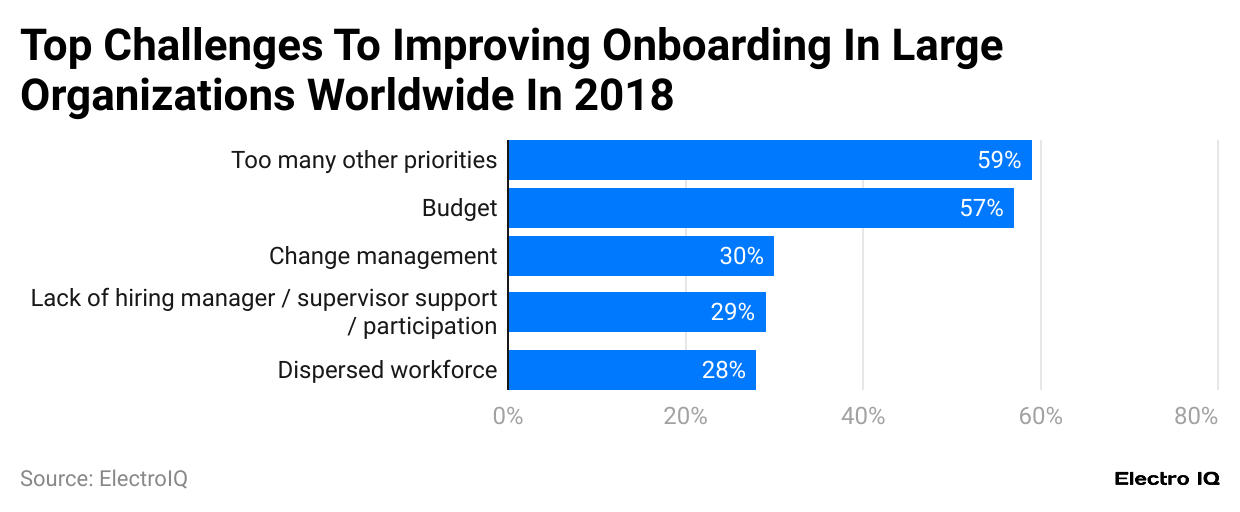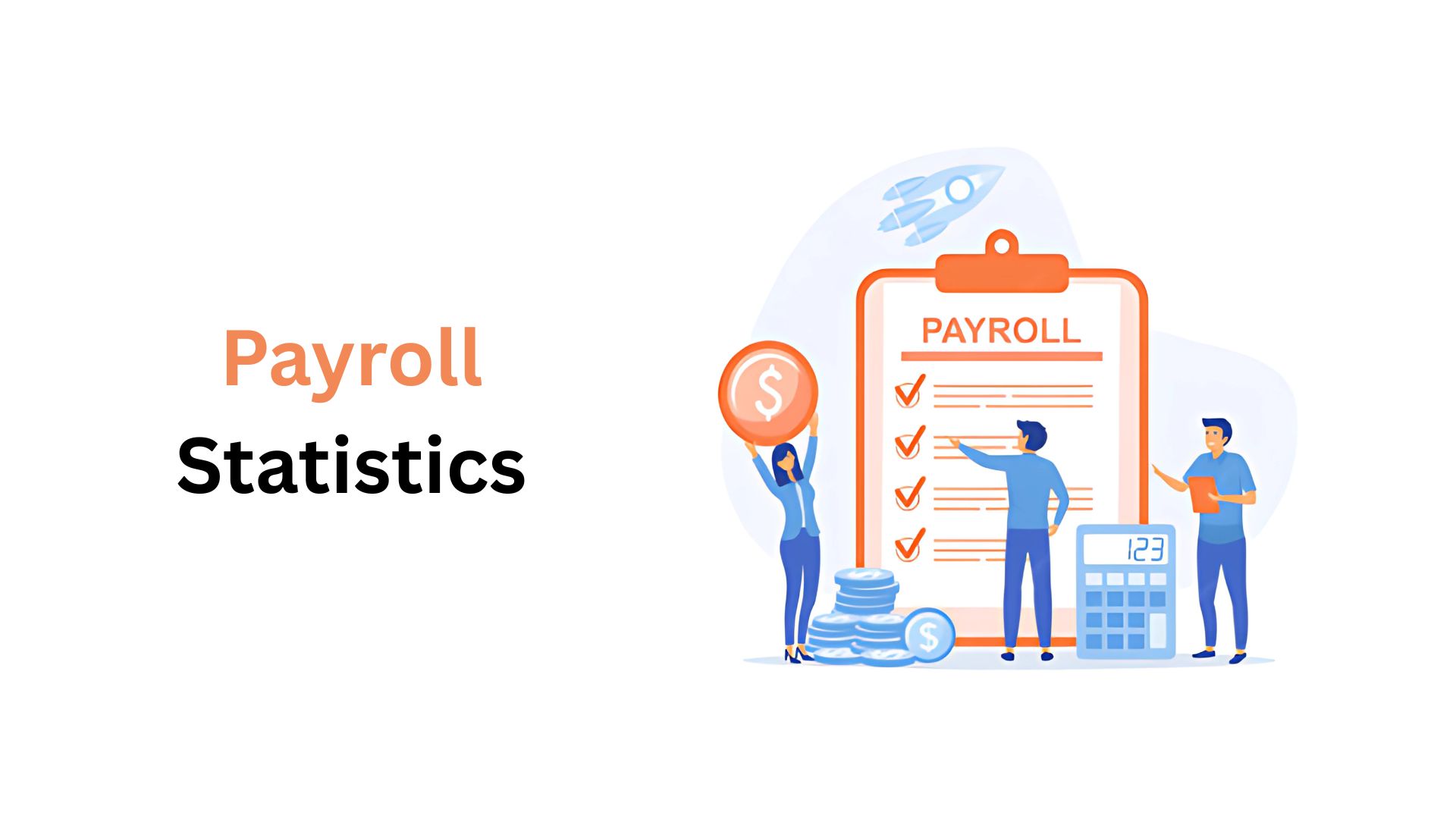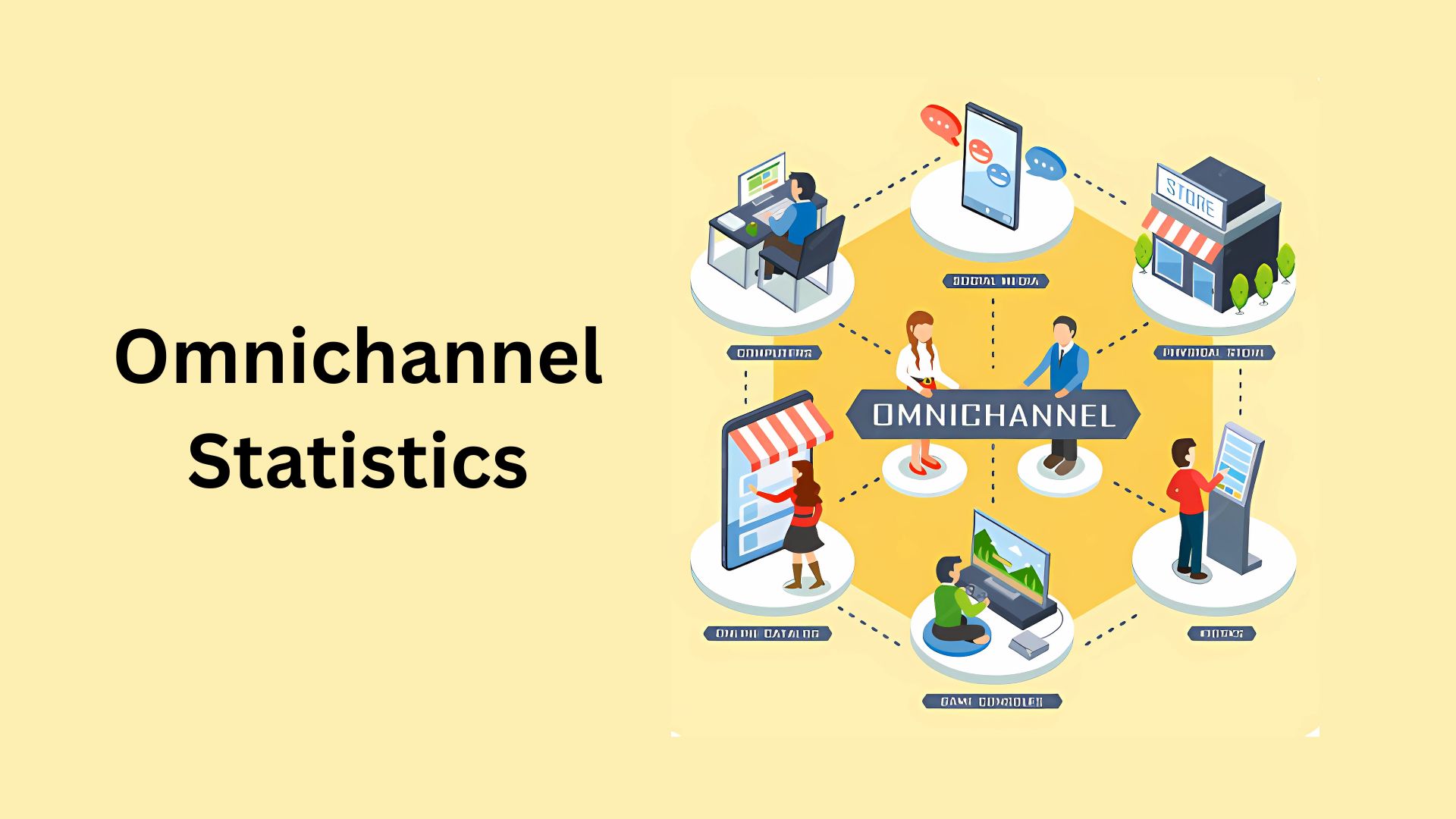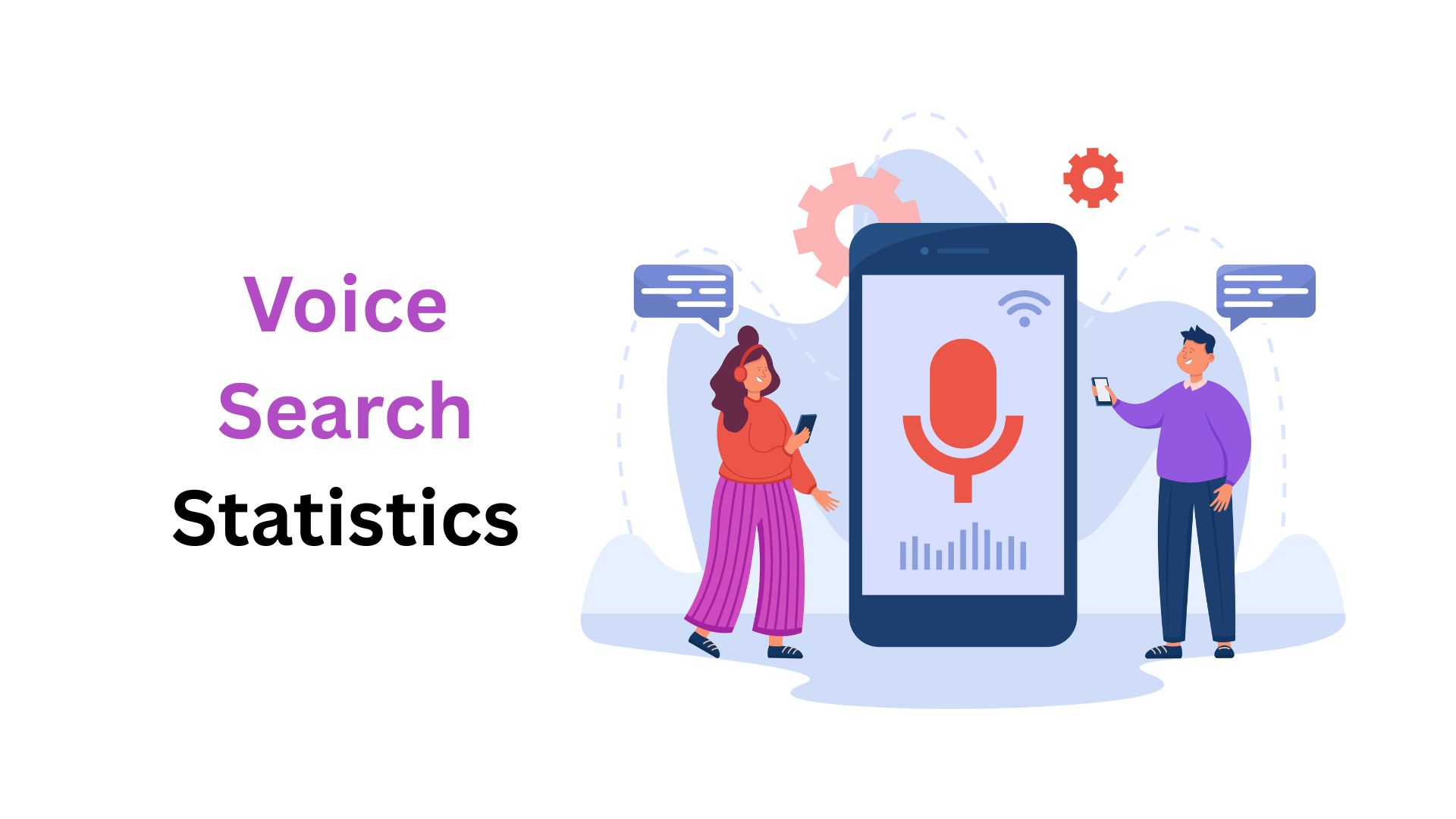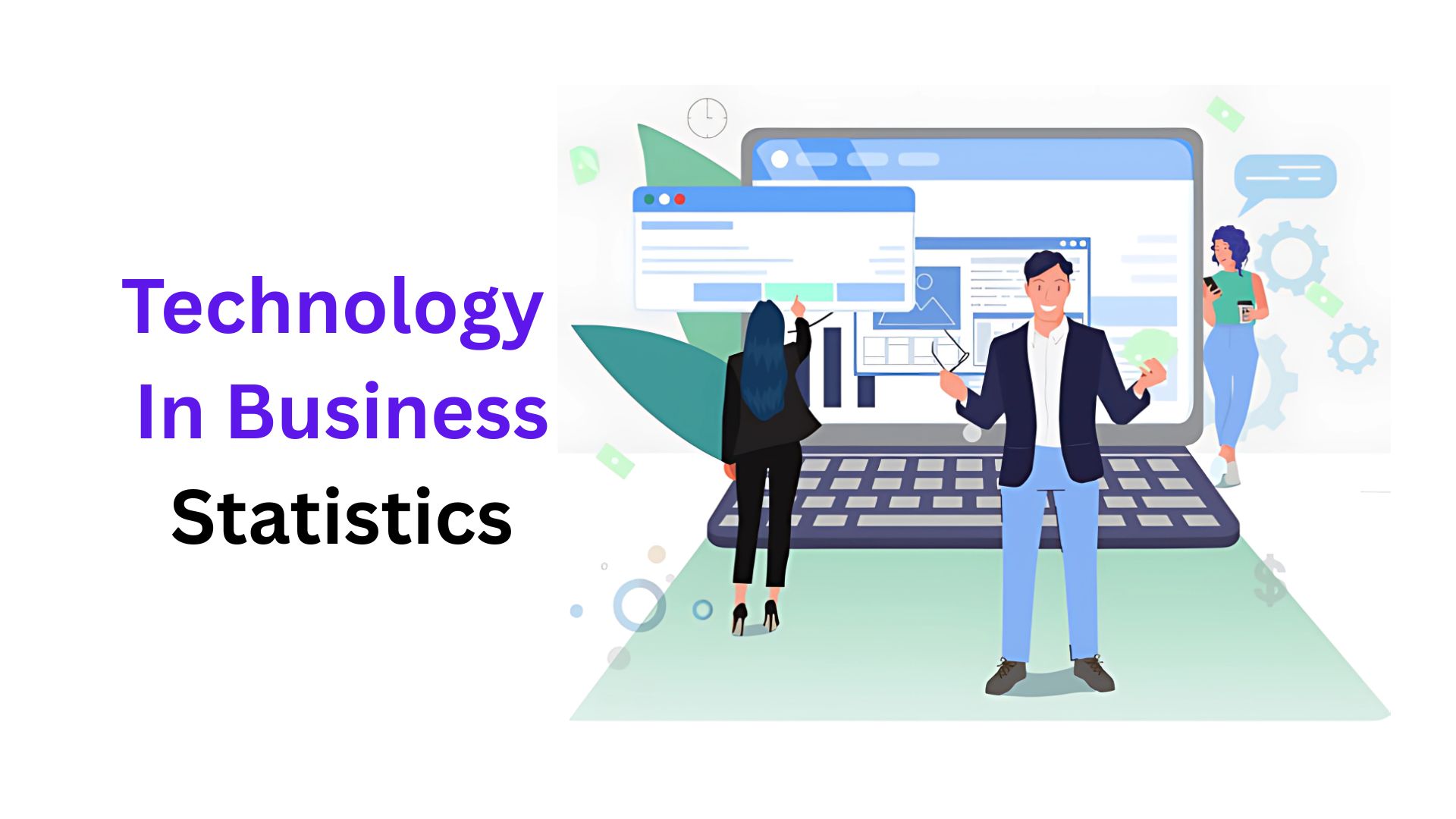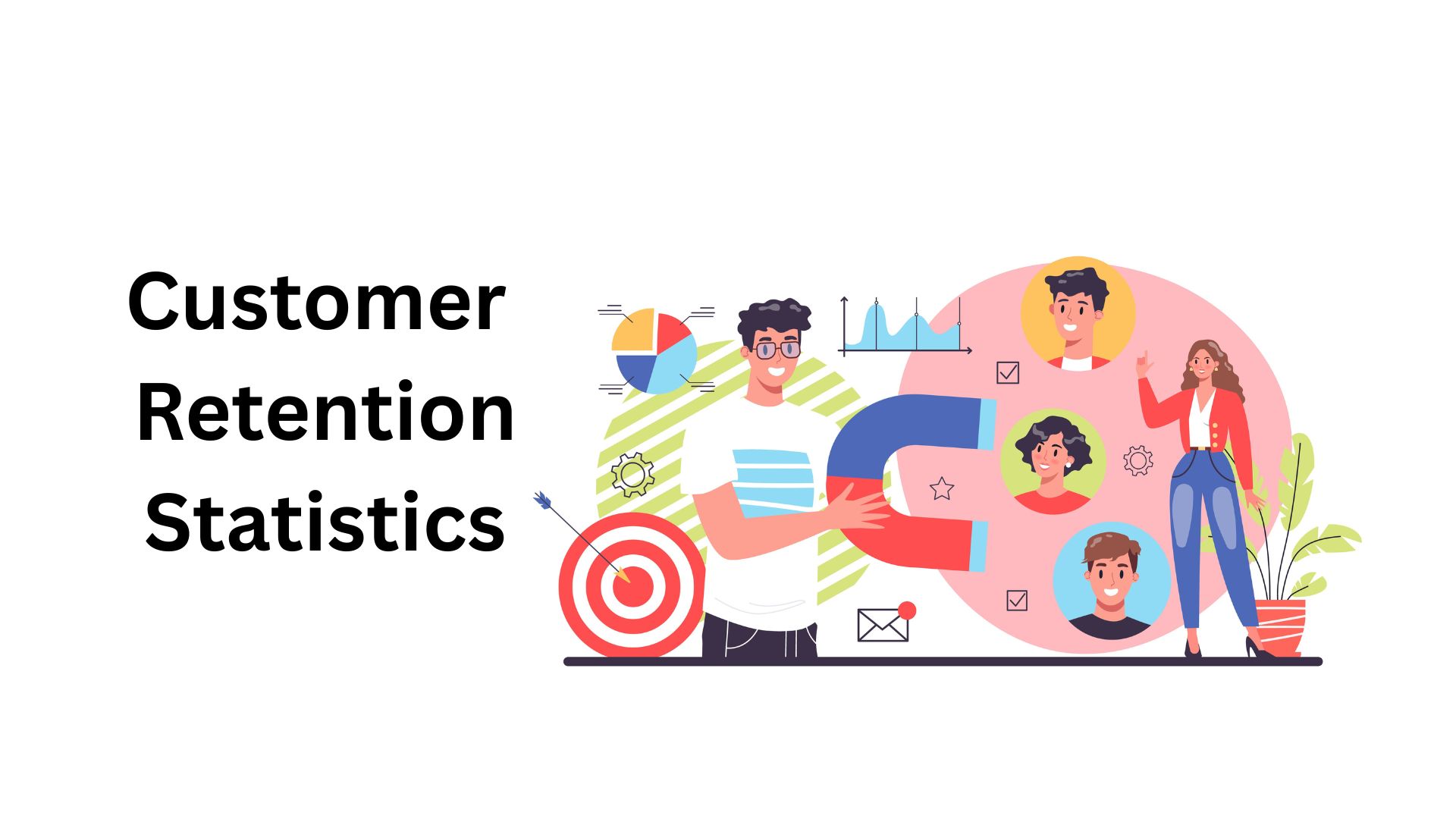Employee Onboarding Statistics By Market Size, Expectation of HR and Facts
Updated · Dec 17, 2024

Table of Contents
- Introduction
- Editor’s Choice
- HR Industry Services Market Size
- HR Industry Market Share
- Significance of Onboarding
- The Expectation of HR From Onboarding
- Employee Expectations with HR
- New Joiner’s Opinion on Onboarding
- Likelihood of Referral Based on Onboarding
- HR Challenges with Onboarding
- Onboarding Barriers in Large Organisations
- Onboarding Barriers in Mid-Size Organisations
- Onboarding Barriers in Small Organizations
- Start Time of Employee Onboarding
- KPI for Employee Onboarding Evaluation
- Technology Used in The Onboarding Process
- Conclusion
Introduction
Employee Onboarding Statistics: Employee onboarding is a critical process that bridges the gap between recruitment and full productivity for new hires. In today’s competitive business landscape, organizations increasingly recognize the importance of a well-structured onboarding program. By going through the Employee Onboarding Statistics, we can learn about the evolving nature of employee onboarding, highlighting key challenges, expectations, and strategies companies adopt to integrate new talent effectively.
From technological innovations to cultural integration, onboarding has become a strategic tool for enhancing employee engagement, retention, and overall organizational success.
Editor’s Choice
- The HR services market grew from 205 billion USD to 323 billion USD in staffing between 2012 and 2022.
- Randstad leads HR services with a 5% market share.
- 79% of organizations prioritize quick integration into the company culture.
- 86% of HR practitioners focus on helping new employees become comfortable quickly.
- 71% of new hires feel prepared and understand their job responsibilities.
- 41% of employees will likely refer friends based on their onboarding experience.
- 49% of companies find monitoring new employees challenging.
- 47% of companies start onboarding when a candidate accepts the job.
- Employee retention is the top KPI for evaluating onboarding (70% of respondents).
- 2% of organizations currently use no technology in onboarding.
- 78% emphasize the importance of a positive attitude towards the employer.
- 74% of HR aim to speed up employees’ time to contribute.
- 65% of new hires feel more productive and welcomed.
- Budget constraints are a significant onboarding barrier across organization sizes.
- Only 8% of employees expect monthly check-ins from HR.
HR Industry Services Market Size
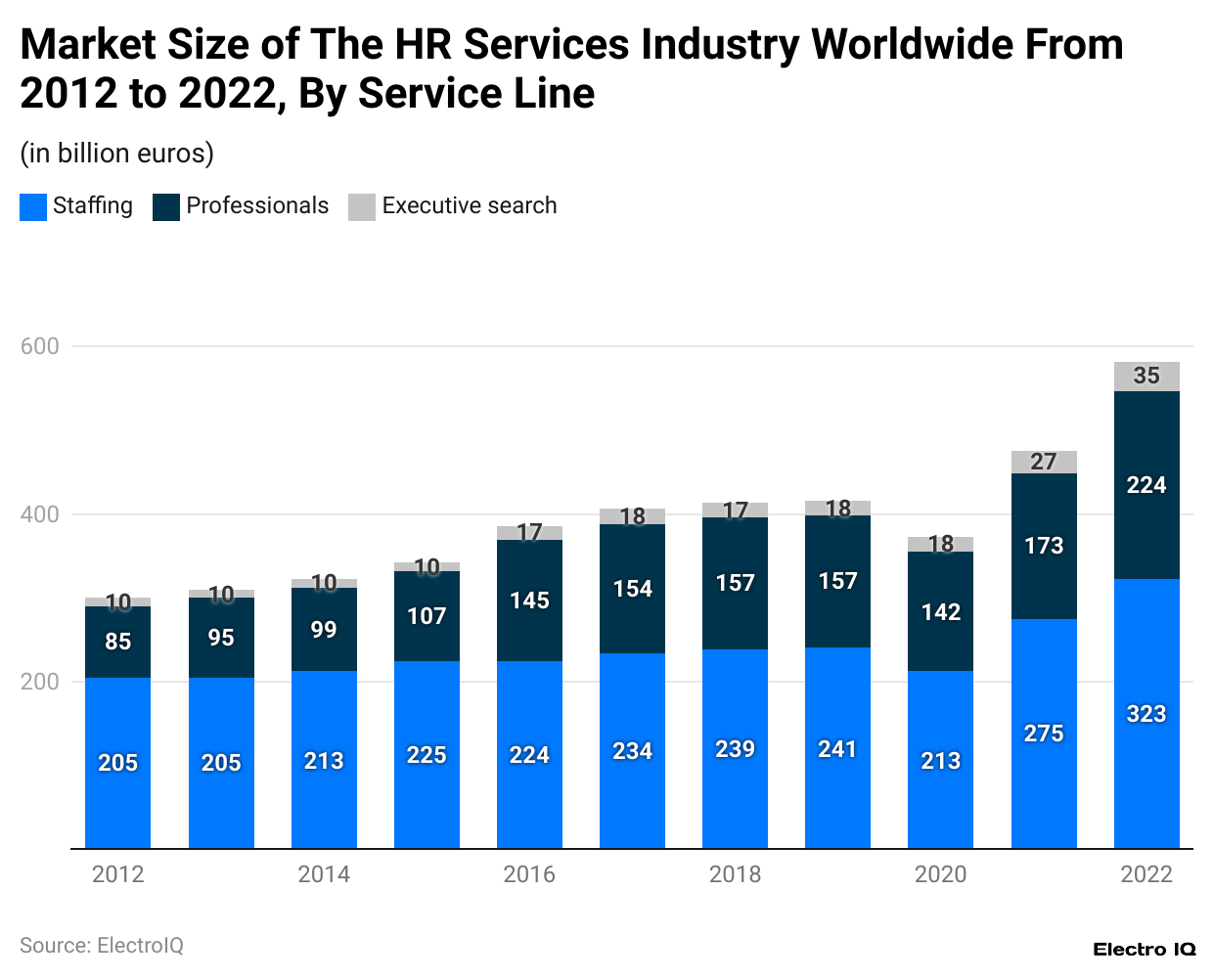
(Reference: statista.com)
- Employee Onboarding Statistics show that the market size of the HR industry has been increasing consistently over time.
- In 2012, HR services in staffing made up 205 billion Euro in the market size, 85 billion Euro for professionals, and 10 billion Euro for executive search.
- As of 2022, HR services in staffing made up 323 billion Euro market size, professional with 224 million Euro, and Executive search with 35 billion Euro.
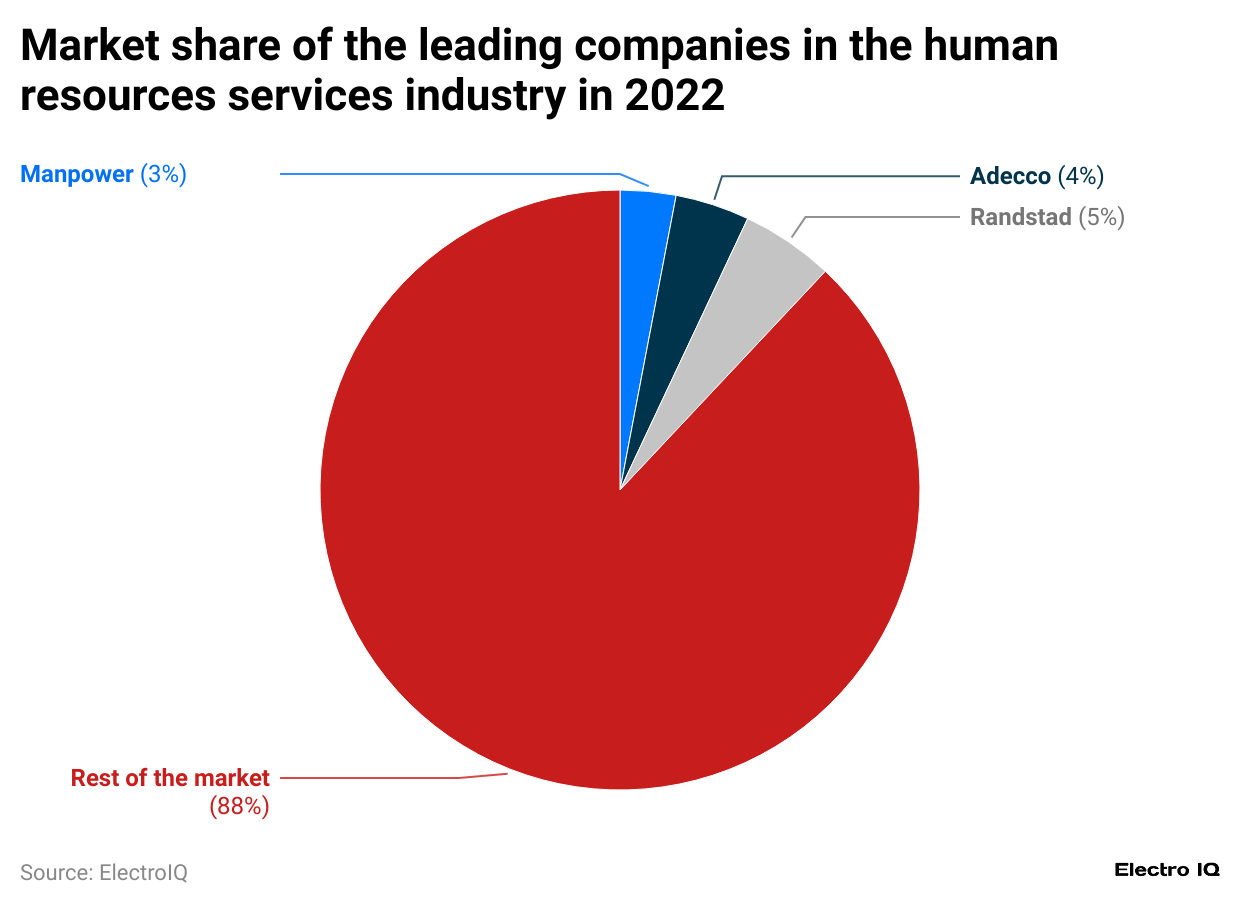
(Reference: statista.com)
- Employee Onboarding Statistics show that Randstad is the leading HR service company with a market share of 5%.
- Adecco has a market share of 4% among HR service industry companies.
- Manpower makes up a market share of 3% of market share of the HR service industry companies.
- The rest of the companies make up 88% of HR service industry companies.
Significance of Onboarding
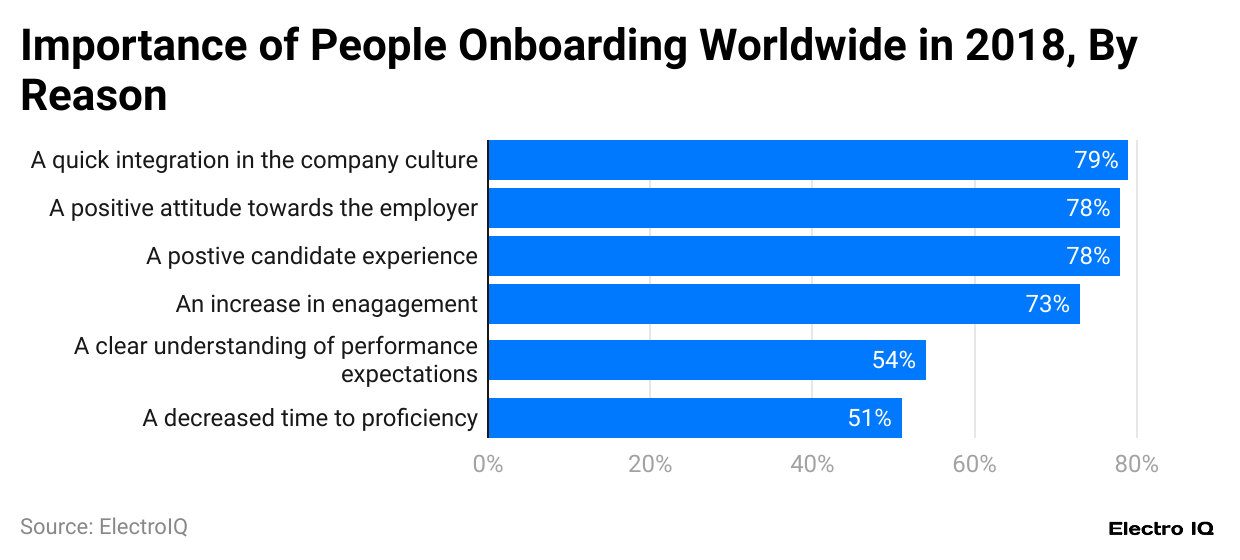
(Reference: statista.com)
- Employee Onboarding Statistics show that quick integration into company culture is the most essential aspect of onboarding, according to 79% of respondents.
- A positive attitude towards the employer is significant, with 78% highlighting its importance.
- Providing a positive candidate experience is equally valued, as noted by 78% of participants.
- An increase in employee engagement follows, marked as crucial by 73% of respondents.
- A clear understanding of performance expectations is considered important by 54% of those surveyed.
- Decreasing the time to proficiency is noted as essential by 51% of respondents.
The Expectation of HR From Onboarding
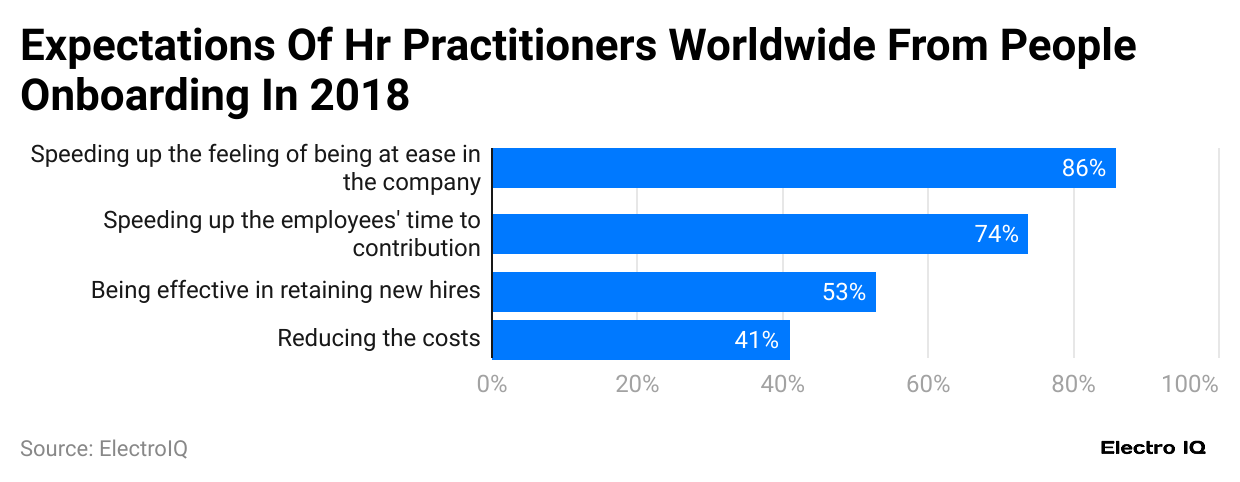
(Reference: statista.com)
- Employee Onboarding Statistics show that speeding up and being at ease in the company is the highest expectation of HR practitioners, as per 86% of respondents.
- Speeding up employees’ time to contribute is another key priority, cited by 74% of respondents.
- Effective retention of new hires is valued by 53% of respondents.
- Reducing costs is considered a priority by 41% of respondents.
Employee Expectations with HR
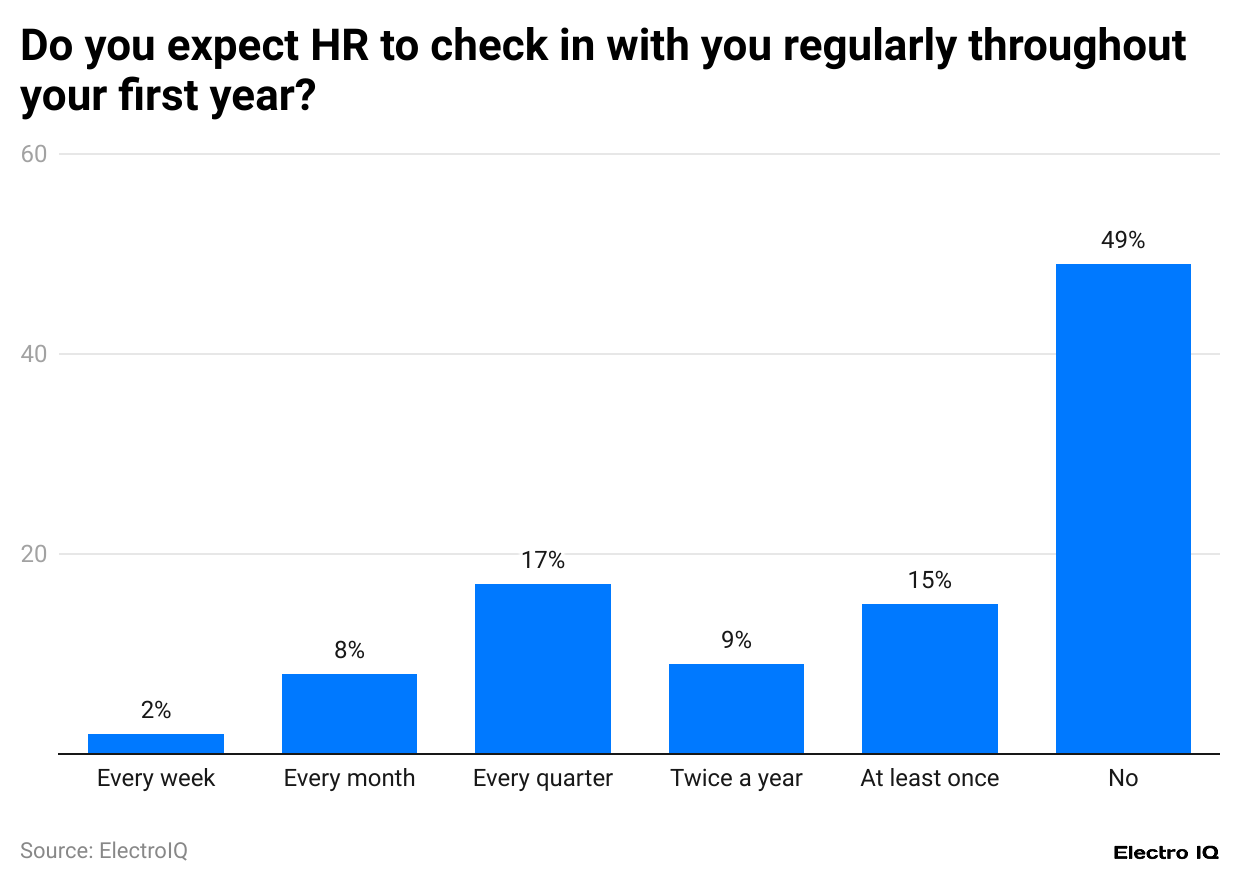
(Reference: statista.com)
- Employee Onboarding Statistics show that 49% of respondents expect HR to only check in with them occasionally throughout the first year.
- 17% of respondents expect HR to check in with them every quarter.
- 15% of respondents expect at least one check-in during their first year.
- 9% of respondents expect HR to check in twice a year.
- 8% of respondents expect monthly check-ins from HR.
- 2% of respondents expect weekly check-ins from HR.
New Joiner’s Opinion on Onboarding
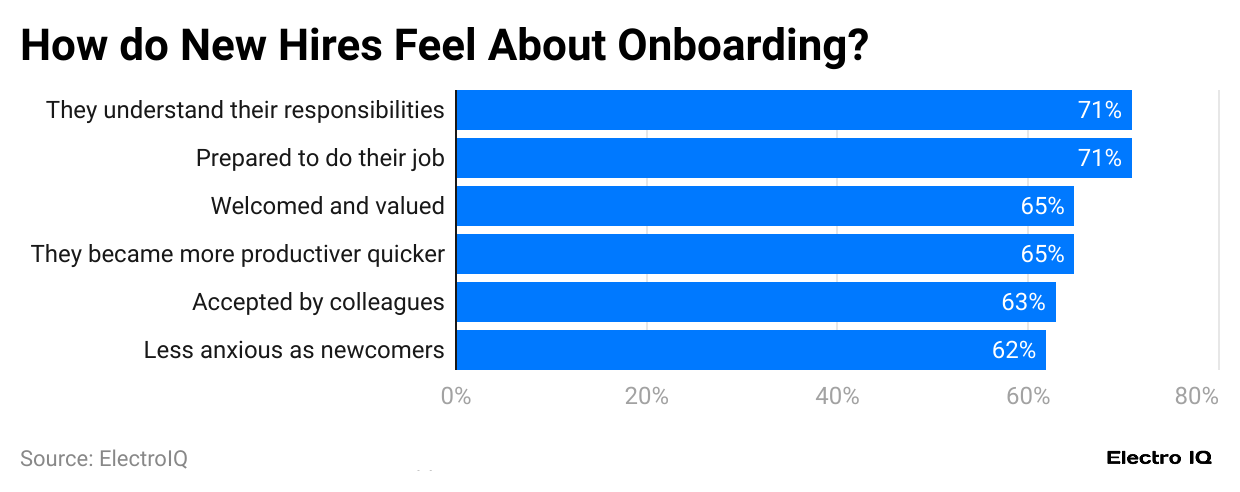
(Reference: statista.com)
- Employee Onboarding Statistics show that new hires understand their responsibilities and are prepared to do their job, according to 71% of respondents.
- Feeling welcomed and valued and becoming more productive quicker is noted by 65% of respondents.
- Acceptance by colleagues is highlighted by 63% of respondents.
- Feeling less anxious as newcomers is reported by 62% of respondents.
Likelihood of Referral Based on Onboarding
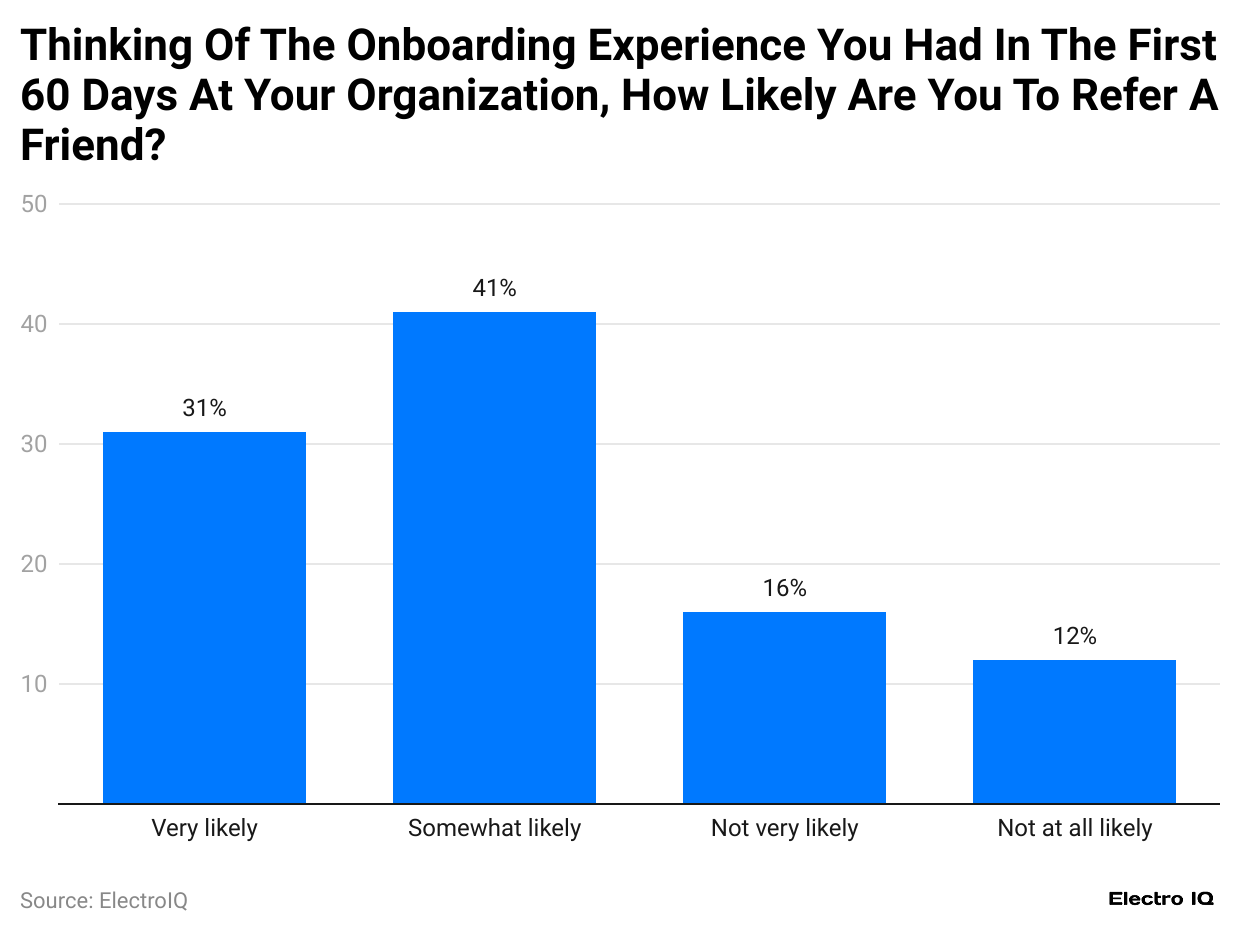
(Reference: statista.com)
- Employee Onboarding Statistics show that 41% of respondents will likely refer their friend based on onboarding.
- 31% of respondents are likely to refer their friends based on onboarding.
- 16% of respondents are less likely to refer their friends based on onboarding.
- 12% of respondents are less likely to refer their friend based on onboarding.
HR Challenges with Onboarding
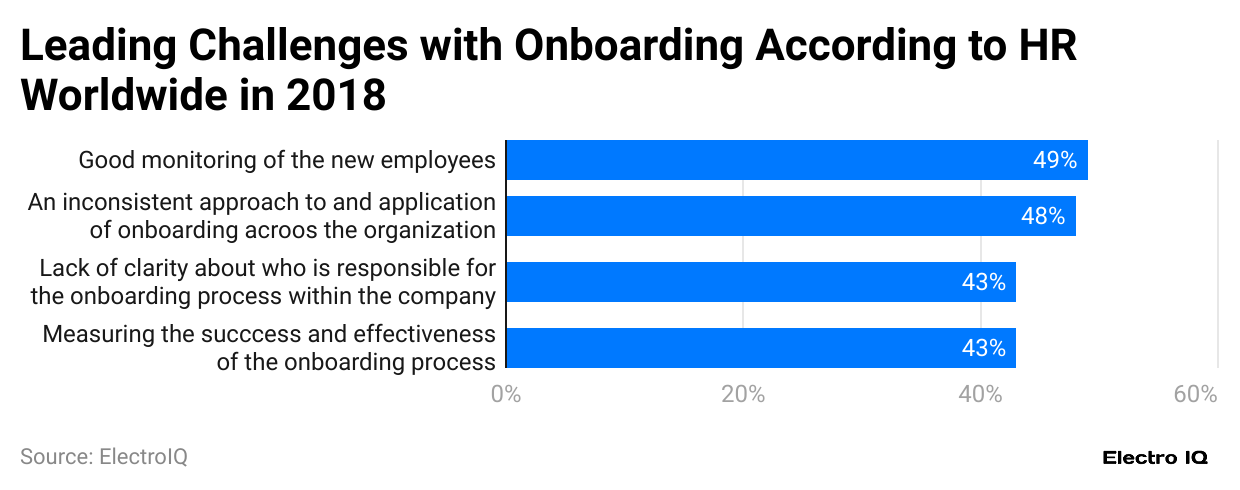
(Reference: statista.com)
- Employee Onboarding Statistics show that good monitoring of new employees is a major challenge with onboarding, according to 49% of respondents.
- According to 48% of respondents, the major challenge is an inconsistent approach to onboarding applications across the organization.
- For 43% of respondents, clarity about who is responsible for onboarding and measuring success and effective onboarding is a major challenge for HR.
Onboarding Barriers in Large Organisations
(Reference: statista.com)
- Employee Onboarding Statistics show that many priorities hinder improving the employee onboarding process for large organizations, as per 59% of respondents.
- For large organizations, budget constraints are another significant challenge, mentioned by 57% of respondents.
- For large organizations, 30% of respondents identify change management as a barrier.
- For large organizations, a need for more hiring manager or supervisor support/participation is noted by 29% of respondents.
- For large organizations, 28% of respondents cited a dispersed workforce as a challenge.
Onboarding Barriers in Mid-Size Organisations
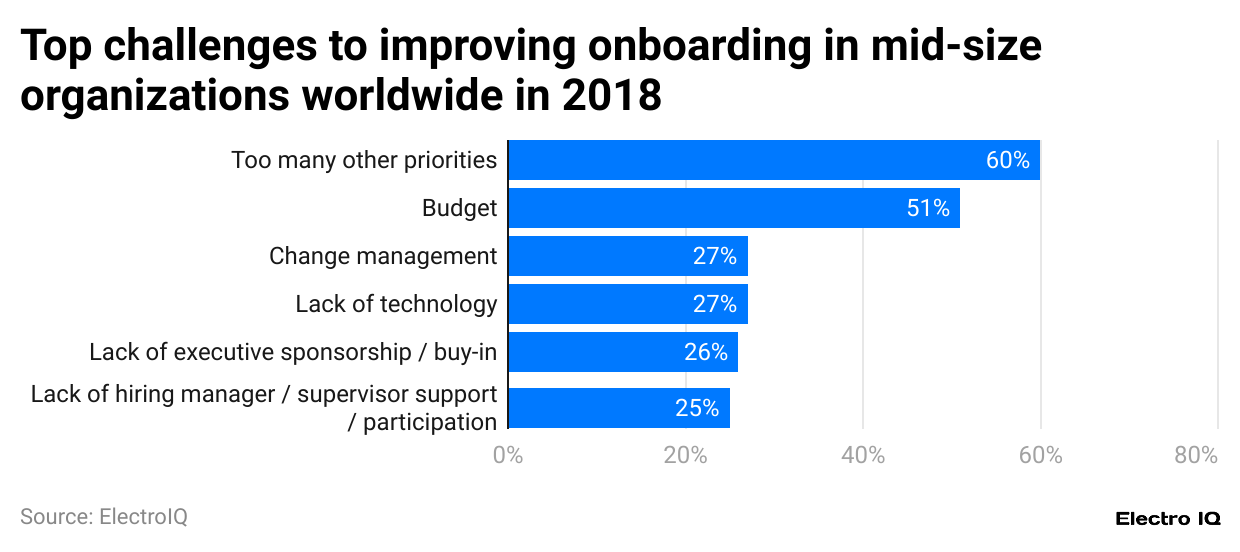
(Reference: statista.com)
- Employee Onboarding Statistics show that for mid-size organizations, many priorities hinder the improvement of the employee onboarding process, as per 60% of respondents.
- For mid-size organizations, budget constraints are another significant challenge, mentioned by 51% of respondents.
- For mid-size organizations, 27% of respondents identified change management as a barrier.
- For mid-size organizations, the need for more technology is challenging for 27% of respondents.
- For mid-size organizations, there needs to be more executive sponsorship or buy-in, as 26% of respondents mentioned.
- For mid-size organizations, a need for more hiring manager or supervisor support/participation is cited by 25% of respondents.
Onboarding Barriers in Small Organizations
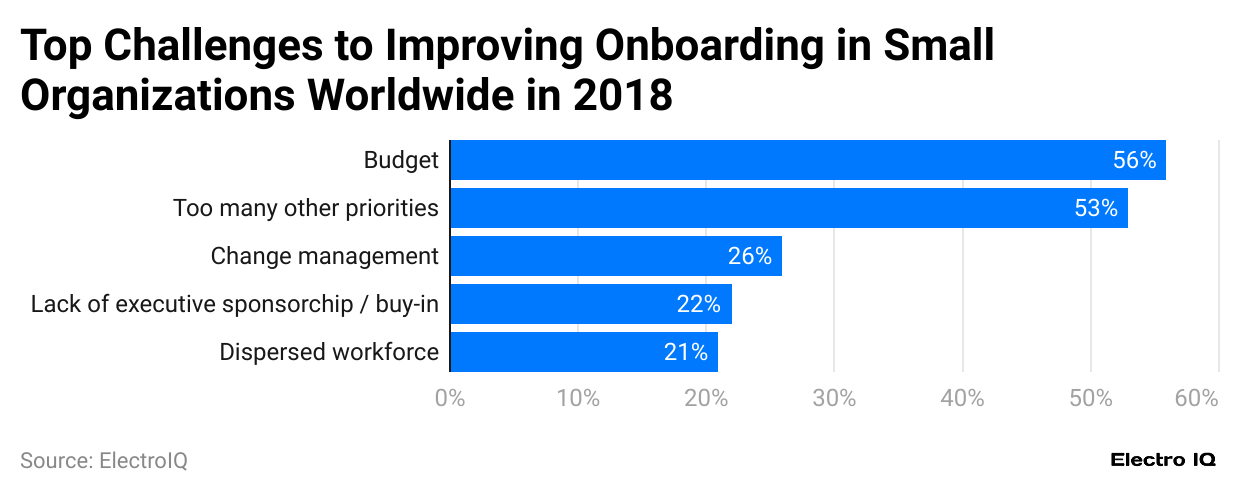
(Reference: statista.com)
- Employee Onboarding Statistics show that budget is the major challenge for the improvement of the employee onboarding process in small organizations, as per 56% of respondents.
- Too many other priorities hinder the improvement of the onboarding process in small organizations, as per 53% of respondents.
- Change management is identified as a challenge for improving onboarding in small organizations by 26% of respondents.
- Lack of executive sponsorship or buy-in is cited as a barrier in small organizations by 22% of respondents.
- A dispersed workforce is considered a challenge in small organizations by 21% of respondents.
Start Time of Employee Onboarding
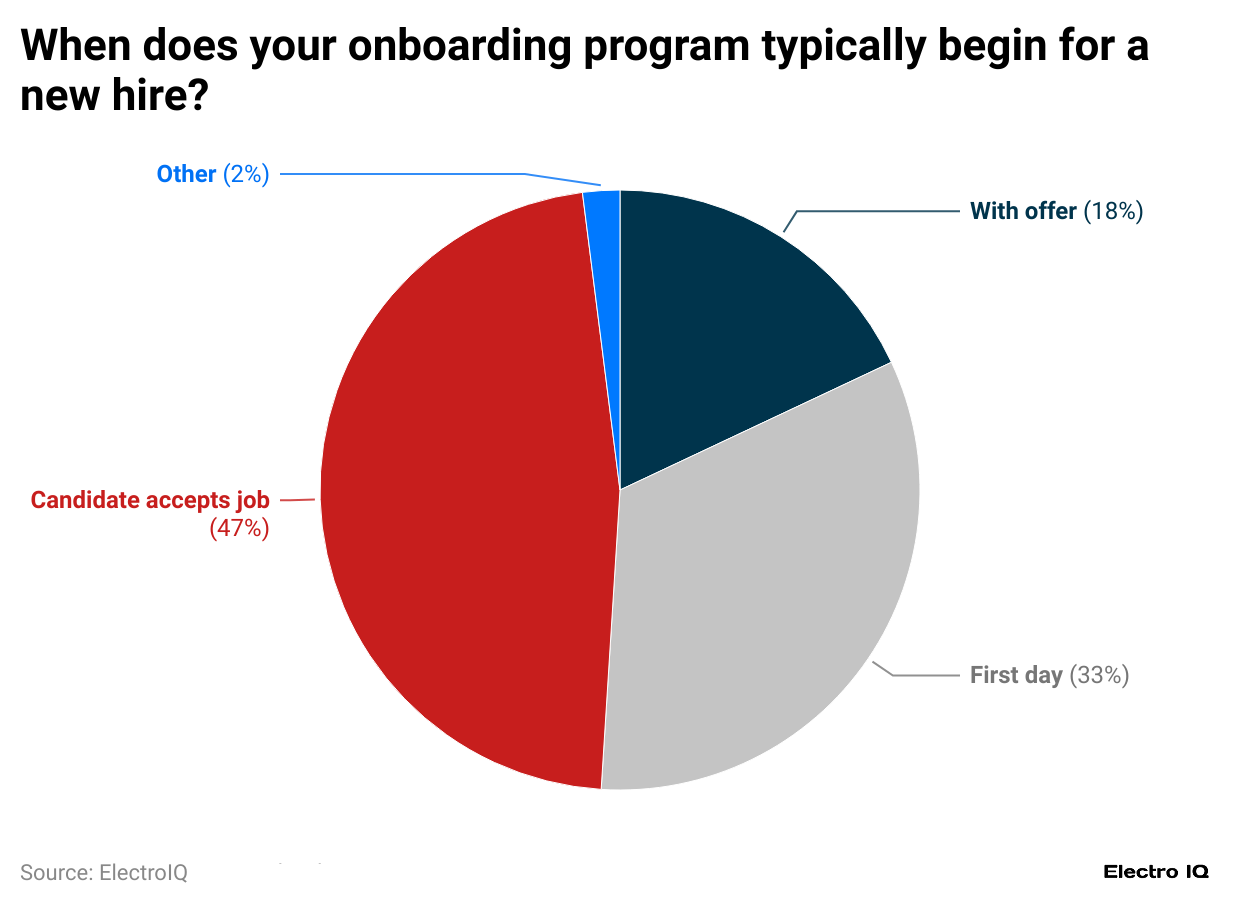
(Reference: statista.com)
- Employee Onboarding Statistics show that for 47% of companies, the onboarding process begins when the candidate accepts a job.
- For 33% of companies, the onboarding process starts on the new hire’s first day.
- For 18% of companies, the onboarding process begins when the offer is made.
- For 2% of companies, the onboarding process starts at other times.
KPI for Employee Onboarding Evaluation
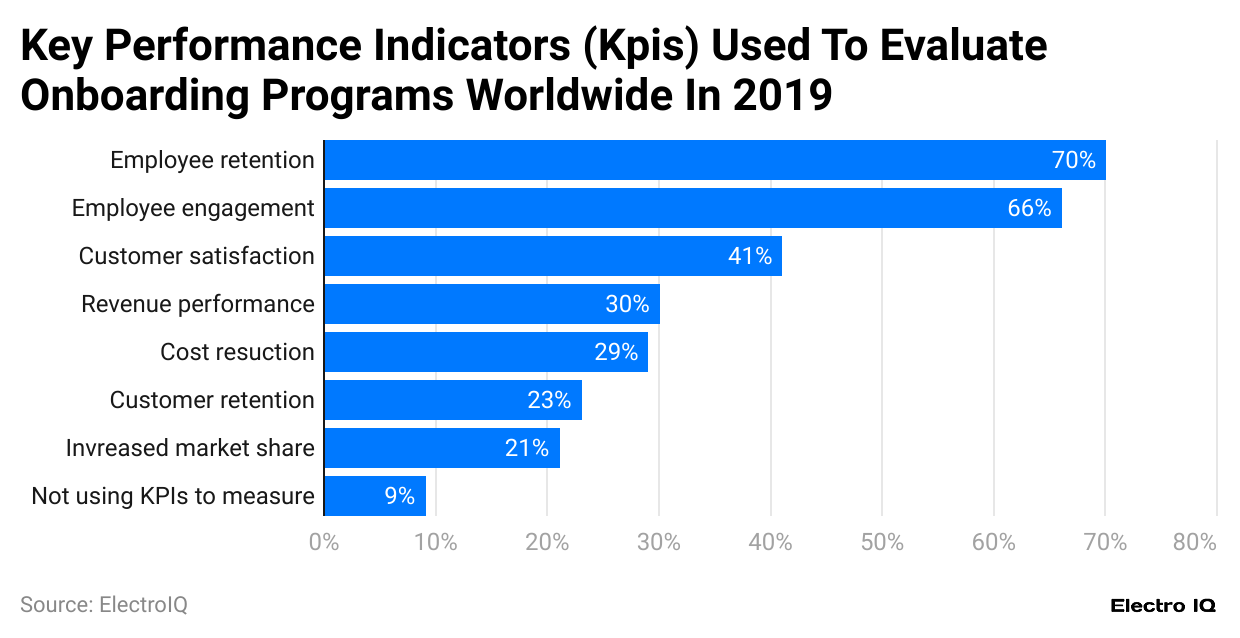
(Reference: statista.com)
- Employee Onboarding Statistics show that employee retention is the biggest KPI in evaluating the onboarding process, as per 70% of respondents.
- Employee engagement is the 2nd biggest KPI to evaluate the onboarding process, mentioned by 66% of respondents.
- Customer satisfaction is the 3rd biggest KPI to evaluate the onboarding process, highlighted by 41% of respondents.
- Revenue performance is the 4th biggest KPI to evaluate the onboarding process, cited by 30% of respondents.
- Cost reduction is the 5th biggest KPI to evaluate the onboarding process, noted by 29% of respondents.
Technology Used in The Onboarding Process
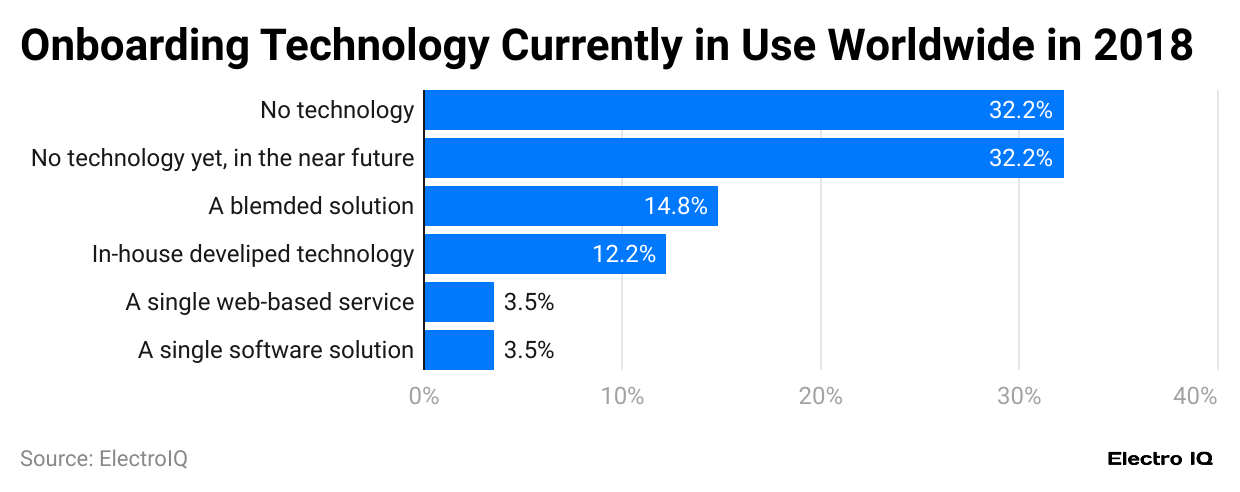
(Reference: statista.com)
- Employee Onboarding Statistics show that no technology is used in onboarding, according to 32.2% of respondents.
- No technology is currently used but planned for the near future, according to 32.2% of respondents.
- A blended solution is used in onboarding, as 14.8% of respondents noted.
- The in-house developed technology is utilized for onboarding, according to 12.2% of respondents.
- A single web-based service is used in onboarding, as stated by 3.5% of respondents.
- A single software solution is used in onboarding, according to 3.5% of respondents.
Conclusion
Employee onboarding has evolved from a mere administrative process to a strategic approach for organizational success. Employee Onboarding Statistics reveal a complex landscape where companies increasingly recognize the importance of comprehensive, technology-enabled, and culturally sensitive onboarding programs. Despite challenges such as budget constraints and organizational priorities, the focus remains on creating positive employee experiences that foster engagement, productivity, and retention.
Companies that invest in robust, empathetic, and strategic onboarding processes are more likely to attract, retain, and develop top talent. The future of onboarding lies in personalization, technological innovation, and a genuine commitment to employee success and well-being.
Sources
FAQ.
It varies, but most companies focus on the first year, with occasional check-ins.
To integrate new employees quickly into company culture and prepare them for their roles.
It increases employee engagement, reduces anxiety, and helps new hires understand their responsibilities.
Monitoring new employees, inconsistent approaches, and unclear responsibilities.
47% begin when the candidate accepts the job, while 33% start on the first day.
32.2% of organisations use no technology, but many plan to implement technology soon.
49% expect occasional check-ins, while 17% expect quarterly check-ins.
New hires want to understand their responsibilities, feel welcomed, and become productive quickly.
41% of employees will likely refer friends based on their onboarding experience.
Employee retention, engagement, and customer satisfaction are the top metrics for evaluation.

Maitrayee Dey has a background in Electrical Engineering and has worked in various technical roles before transitioning to writing. Specializing in technology and Artificial Intelligence, she has served as an Academic Research Analyst and Freelance Writer, particularly focusing on education and healthcare in Australia. Maitrayee's lifelong passions for writing and painting led her to pursue a full-time writing career. She is also the creator of a cooking YouTube channel, where she shares her culinary adventures. At Smartphone Thoughts, Maitrayee brings her expertise in technology to provide in-depth smartphone reviews and app-related statistics, making complex topics easy to understand for all readers.

